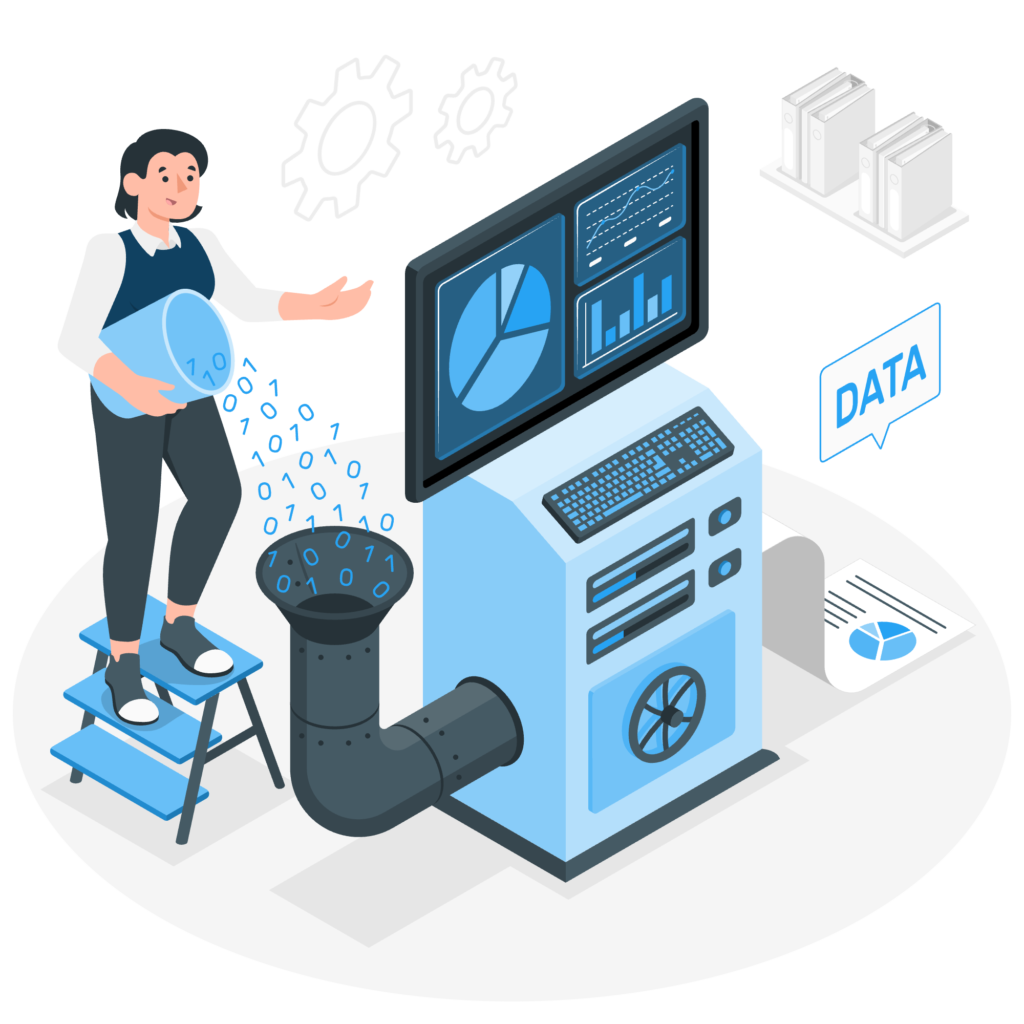Often ignored aspects of
Google Analytics

Krishna
Co-Founder
Discover the overlooked aspects of Google Analytics (GA) that hold tremendous untapped potential for marketers and eCommerce entities. Learn how the recent changes have made Google Analytics even more powerful.

Google Analytics (GA) is used by most eCommerce marketer and product team. GA comes in two flavors – Universal Analytics or GA Standard and GA 360. GA 360 is the premium version of analytics that is quite expensive for an up-and-coming brand. Google monetizes GA 360 by capturing data globally across many brands and using this data for improving its advertising performance. Universal Analytics or GA Standard is free for all users. And one of the key offerings of Google Analytics is Attribution. However, marketers often face challenges with relying on this data, which compels them to invest in other tools to solve the attribution problem.
Google provides access to the raw user activity data it captures on your website, in the latest GA4 model. With the assistance of a knowledgeable analyst, marketers can now gain valuable insights into their marketing performance. This can be achieved without the need to add more pixels or invest in additional tools specifically designed for attribution. This change is significant, and its impact has not yet been fully appreciated by many.
So, what is Raw Events Data?

Imagine a user clicking on your ad, landing on your website, browsing a few products, and going through the buying journey.
This user activity is captured by many pixels installed on the website. Typically, on any direct-to-consumer site, you will find pixels belonging to Google analytics and many advertising platforms like Facebook, Google, TikTok, Instagram, and so on. All these pixels that capture user activity data and utilize the data to improve advertising performance. This activity data is what we call as the Raw Event data.
The data typically consists of the user details like IP Address, location, and event data like the details of the paged viewed, a button clicked, and so on. This data ends up in the walled gardens of these tools with only an aggregated version of this data shared with the brand and thus limiting their ability to analyze the data at a user level i.e., understanding the user journey.
However, with the introduction of GA4, this situation is set to change. Google, for the first time in 20 years, has made a groundbreaking decision by exposing the raw data to users of the free version of GA4. Previously, only users of GA 360 had access this valuable data, but it came with a hefty price tag. Consequently, a whole generation of digital marketers found themselves excluded from this vital data set, leading them to rely on their engineering teams to capture the information or resort to third-party tools that offered raw data access at a more affordable cost.
Unfortunately, the availability of another tool for the same data has resulted in marketers facing a new challenge – the existence of two different sources of truth: GA and the third-party tool. This situation creates uncertainty as marketers struggle to determine which data source to trust, especially when discrepancies arise in the numbers. The disparities can be attributed to variations in how these tools track users and define their metrics.

Some of the examples of discrepancy includes –
- Conversion rates being different across tools.
- Mis-attributed sales; channels claiming more credit which differs from the marketer’s beliefs on how the channel is performing.
- Misreporting of LTV of customers
Tools like Daton, Stitch, and Fivetran help you move data from various sources into a cloud data warehouse like Snowflake or BigQuery without the analyst or a data engineer having to write a single line of code. When a source you need is not supported in these tools, an analyst or a data engineer has to write code to automate data extraction from these sources into the data warehouse. Alternatively, if the source data is not used frequently, the analyst can spend some time periodically to manually download the data and move it to a data warehouse.
So, the total cost is the sum of the price paid for the software + the time the analyst spends on manual work.
With Daton, our eCommerce data pipeline, we are attempting to reduce the manual work of the analyst to zero by building custom connectors for our customers to use.
A data warehouse acts as the single source of truth for business data. There are many data warehouses available in the market and most have pay-as-you-go pricing.
The cost here is the cost customers pay to load data in the data warehouse and for querying the data.
The second aspect of the costs is the effort needed to build the necessary data models in the warehouse using tools like dBT or Airflow. These models codify the business rules and convert the data into usable metrics and dimensions that can then be visualized in BI tools like Tableau, Looker, or PowerBI.
The costs here as the costs you pay for data modeling. Typically, an analyst who is adept at using SQL or Python or a data engineer can undertake this activity.
The costs associated here are the cost of the analyst or data engineer. The tooling cost is negligible as dBT has a decent free tier and is something that we often recommend.
This includes the costs associated with ensuring the accuracy and consistency of the data, such as investing in data cleaning tools or hiring data quality specialists.
Finally, the quarterback in stitching all these activities together is a capable analyst or ideally, a data team. An experienced analyst/ data team can help through the entire lifecycle – finds the right tools for your data initiative, builds the data stack, keeps your data stack up and running, ensure data quality, and helps find insights that can support decision-making.
Learn how to approach your dtc brand data and data needs.
Despite investing in 3rd party tools, customers still look at GA to understand their customers and attribution better.
GA, coupled with the expertise of an analyst, marketers can unlock valuable insights into their marketing performance. This approach eliminates the need to invest in additional tools, pixels or rely on costly solutions for attribution. The analyst can navigate the data within GA, extracting meaningful information and providing a comprehensive understanding of the marketing strategies employed.
Let’s imagine a Shopify store with GA installed. Shopify has details of your customer and the purchases they’ve made historically. GA has the data of the activity a user has performed prior to/during the purchase, what channels/campaign the user came from, and what the user did after they made their first purchase; a user coming back to explore other products the brand has to offer.
By stitching the customer and transaction data from Shopify with the raw event data that GA4 now offers with the help of an analyst, marketers can now start to see:
- What touchpoints lead to conversions?
- How many touchpoints/channels on average they should reach a customer to improve conversions?
- Which customers have a high likelihood of conversion?
- Which channels/campaigns lead to high LTV customers?
- How to attribute sales to the right channels in a proportion that makes sense for the business?

By leveraging a data warehouse and funneling GA4 and Shopify data into the warehouse, these vital customer metrics can not only be unlocked, but also integrated into the rest of the reporting thus making the entire business run on a single source of truth that is trusted, validated, and adopted. Did I say it costs less than the alternative?
It is now time to start thinking about attribution, not in a silo, but in the larger context of the business. Attribution is a feature/outcome of your data warehouse initiative, and LTV needs to factor in all the input costs before it becomes truly meaningful.
Investing in a data warehouse is step 1 in this direction.
By consolidating all the enterprise data from eCommerce platforms like Shopify, GA4, Advertising data from platforms like Facebook, TikTok, email marketing systems like Klaviyo, COGS data from your ERP systems or spreadsheets and building reporting on top of this data warehouse is a time tested and proven mechanism to achieve a single source of truth.

By investing in a data warehouse brand operators can have a single pane of glass to view:
- Sales and revenues
- Profitability across sales channels
- Marketing Attribution
- Marketing performance including ROAS, ROI, CAC, others.
- Deep customer insights including LTV, high performing customer segments,
- Subscriber insights for brands relying on subscription revenues.
- Product penetration, product mix, cross sell and upsell opportunities.
- Operations efficiency
- Inventory analytics including demand forecasting, and more.
With advancements in cloud data warehousing and cloud data pipelines, the time to value for data warehousing initiatives has come from months/years to weeks.
With ever increasing cost of advertising, a higher cost of borrowing money, supply chain issues (although temporary) it is more important than ever for brands to take their data seriously, invest in a data warehouse, measure what matters, and leverage data to drive for profitability.
Conclusion
By combining the power of data from GA4 with the rest of the enterprise data, brand operators can understand their customers and outcomes of their marketing efforts better than ever before.
If you haven’t migrated to GA4 yet, you should do so immediately. Time is ticking on Universal Analytics which is set to be sunset in July 2023. By not taking this transition in GA seriously, you are leaving money on the table and not to mention, spending time evaluating and spending money on 3rd party tools that claim to solve attribution but do little beyond that in shining light on opportunities to grow your business.




